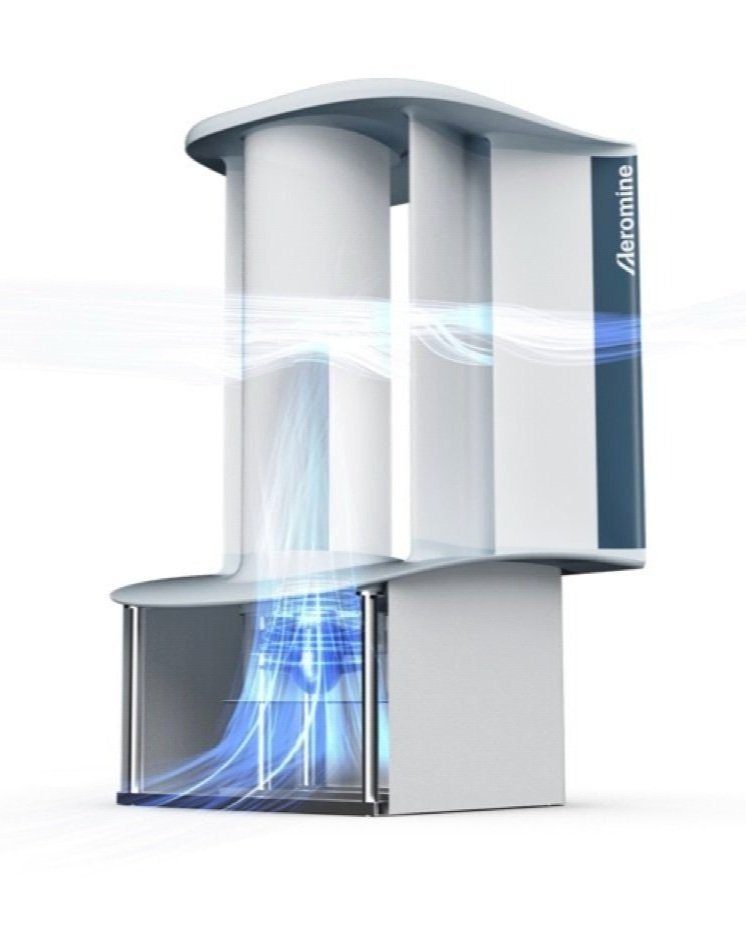Aeromine wind generator – the secret of this high efficiency wind turbine
Following the great interest in the Aeromine wind turbine, here is a follow-up article.
Here we explain, among other things, how it is possible to achieve a greater return than with solar panels. This article digs deeper than is usually the case with device articles, but sometimes that is necessary to answer technical questions.
For those who have not yet read the previous article, a short summary. The Aeromine wind generator is capable of generating more energy than a comparable investment in solar panels under optimal conditions, including a large flat roof and no major obstacles in the vicinity.
Is the Aeromine wind generator suitable for me?
The Aeromine wind generator achieves the highest yield in areas with a lot of wind, preferably wind from a fixed wind direction. This is the case in the Netherlands. We usually have southwest wind. A second important requirement is that you must have a large flat roof.
Also, there should not be too many obstacles around. Therefore, wind generators placed on a tall building will have the highest efficiency. Of course you must manage the roof yourself, or it must be possible to have this wind generator installed by, for example, the residents’ association of an apartment complex. The installation of this structure may also require a permit.
How do I get the Aeromine wind generator?
This is probably the question most people will ask themselves. At the moment, the only group that can tell you more about that is Aeromine itself. The company has a representative in Europe, Claus Loenborg, who is a Managing Director. Some research yielded the following contact information. He will probably be particularly interested in cooperation with large parties. You can also use the contact form on the website.
At the moment, the Aeromine is not yet in production, although a prototype has been built for the German concern BASF, which turned out to meet expectations. The model is not yet in production. Getting your own Aeromine directly is therefore impossible at the moment, but there are some resources that you can possibly use to build them yourself. For example, there is the patent application, with clear drawings, and there is photo material of prototypes, including on their website.
In principle, it is possible to reverse engineer an Aeromine-like model and experiment with it. Of course you are on the edge of the law, if not about it. But as a hobby craft project, it could basically stay under the radar. The alternative is to wait until they start mass-producing this wind turbine. That could take a few years of unaffordable power.
How is it possible that the wind generator can achieve so much efficiency with such a small surface area?
In the windmill world, there is a well-known relationship between the surface area of a wind turbine and the amount of wind energy it can absorb. This is Betz’s law, which applies to all windmills with a rotor. According to this law, a maximum of 59% of all wind energy can be captured in a given area. At first sight it therefore seems absurd that with the fairly small diameter of the Aeromine wind generator, an estimated 5 m2, an enormous return can still be achieved.
However, appearances are deceiving here. The actual surface area of the Aeromine wind generator is much larger. After all, the large building on which this wind generator stands makes also part of the aerodynamic construction.
What the wind generator does is tap the fast-flowing airflow around the perimeter of the building. You can now also see why the yield is so high: the kinetic energy of the wind that flows against the building is concentrated at the top edge of the roof, so that extremely high speeds are reached at that point and the yield is unprecedentedly high.
The second explanation is that the wind generator does not interfere with the airflow as a rotor does. This creates vortices and that means energy loss. Instead, the Aeromine wind generator concentrates the airflow as a laminar flow that experiences much less friction. This creates a negative pressure and air is sucked in via the propeller.

This YouTube video was recommended by Aeromine itself.


